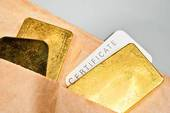|
Smart Jewelry Shopper How to Buy Jewelry & Gemstones With Confidence |
 |
Precious metals differ from industrial metals as they are classified specifically for jewelry. These generally refer to metals such as gold, silver or platinum group metals. The platinum metals include: iridium, platinum, palladium, ruthenium, osmium, and rhodium. Other metals which are “base” or “industrial” metals may still be valuable such as copper which is used in coinage but are rarely considered “precious”. Understanding the various types of metals will assist you in making an educated purchase. Most precious jewelry is based on long term tradition. Since silver and gold have been used as ornate décor for centuries, they remain the popular choice among investors. The benefit to precious metals is they are easy to manipulate, are beautiful and don’t rust over time. Platinum Platinum is a more recently popular precious metal which is more frequently used today than in ancient times. This beautiful metal was not easy to work with until the 19th century but offers a white, patina hue which appears vintage and provides a lovely backdrop for diamonds in particular. True platinum has at least 95% purity and anything lower than this is considered to be platinum alloy. When purchasing platinum it is important to find out the percentage of pure platinum. Since platinum is heavier and more dense than gold, it is considered to be much more durable. This makes for an excellent heirloom which can be handed down through generations while still maintaining its beauty. Gold Gold has been the staple of prestige since ancient times and remains true to this value even today. Gold is measured by it’s fineness in purity. Most individuals understand this to be the measure of the karat. The purest form is 24 karats and is less frequently used in fine jewelry because it is too soft. The purities measure down from there as fine jewelry is in the range of 18k-14k and only about 75-58% pure. Fashion jewelry contains about 42% purity or around 10k which is the legal minimum for jewelry made from gold. Those who love gold but cannot afford the hefty price tags will often opt for gold plated in order to save money but still have a beautiful piece of jewelry. Of course this is not true gold and is simply plated through a chemical bonding to a base metal such as nickel or silver.
|
 |
|
 If you are in the market for jewelry, you may already be researching the various grades, cuts and
clarity of diamonds and gemstones. One important and sometimes overlooked factor however is having an
essential guide to buying precious metals before purchasing your jewelry.
If you are in the market for jewelry, you may already be researching the various grades, cuts and
clarity of diamonds and gemstones. One important and sometimes overlooked factor however is having an
essential guide to buying precious metals before purchasing your jewelry. The best silver to use for jewelry is sterling. This is because the
consistency of silver is 92% compared to other home items or antiques such as candelabras
or coins which are often plated. Since silver is so affordable it has become a popular
fashion trend and can still be considered a precious metal regardless of the
commonality.
The best silver to use for jewelry is sterling. This is because the
consistency of silver is 92% compared to other home items or antiques such as candelabras
or coins which are often plated. Since silver is so affordable it has become a popular
fashion trend and can still be considered a precious metal regardless of the
commonality.